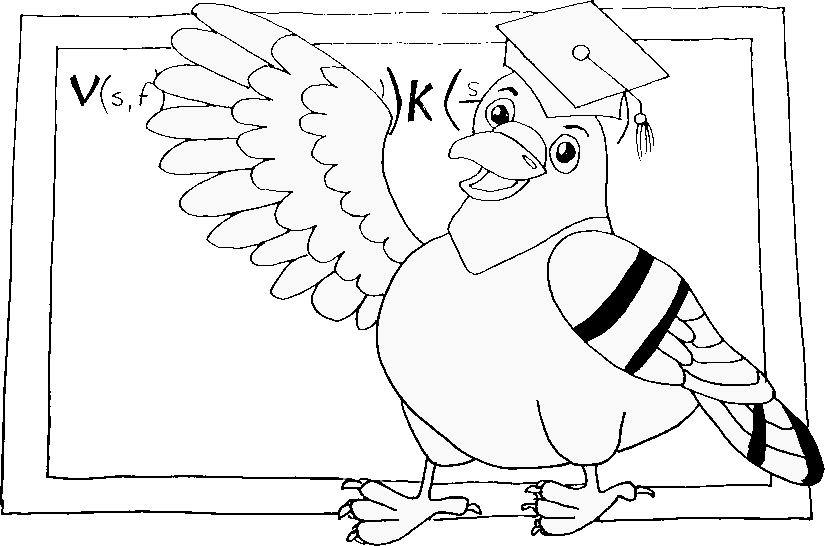Path integral metadynamics
Path integrals simulatins are able to describe the quantum thermodynamics of distinguishable particles at finite temperature, and are the most accurate approach to describe the behavior of light nuclei (e.g. hydrogen) at room temperature and above.
They can be combined with metadynamics to accelerate the sampling of rare events, and compute a “quantum free energies” that reflect (in an approximate way) the effect of zero-point energy and tunneling on reaction rates.
Free-energy of the Zundel cation
This lecture provide a hands-on interactive tutorial (that you can also download and run locally) that uses the i-PI code to perform path-integral simulations for the Zundel cation, a protonated water dimer. PLUMED is used to compute appropriate collective variables, using an input as follows
# default units are LENGTH=nm ENERGY=kJ/mol TIME=ps doo: DISTANCECalculate the distance/s between pairs of atoms. More details ATOMSthe pair of atom that we are calculating the distance between=1,2 co1: DISTANCESCalculate the distances between multiple piars of atoms This action is a shortcut. More details GROUPACalculate the distances between all the atoms in GROUPA and all the atoms in GROUPB=1 GROUPBCalculate the distances between all the atoms in GROUPA and all the atoms in GROUPB=3-7 LESS_THANcalculate the number of variables that are less than a certain target value. Options for this keyword are explained in the documentation for LESS_THAN.={RATIONAL R_0=0.14} co2: DISTANCESCalculate the distances between multiple piars of atoms This action is a shortcut. More details GROUPACalculate the distances between all the atoms in GROUPA and all the atoms in GROUPB=2 GROUPBCalculate the distances between all the atoms in GROUPA and all the atoms in GROUPB=3-7 LESS_THANcalculate the number of variables that are less than a certain target value. Options for this keyword are explained in the documentation for LESS_THAN.={RATIONAL R_0=0.14} dc: COMBINECalculate a polynomial combination of a set of other variables. More details ARGthe values input to this function=co1.lessthan,co2.lessthan COEFFICIENTS the coefficients of the arguments in your function=1,-1 PERIODICif the output of your function is periodic then you should specify the periodicity of the function=NO mtd: METADUsed to performed metadynamics on one or more collective variables. More details ARGthe labels of the scalars on which the bias will act=doo,dc PACEthe frequency for hill addition=10 SIGMAthe widths of the Gaussian hills=0.005,0.05 HEIGHTthe heights of the Gaussian hills=4 FILE a file in which the list of added hills is stored=HILLS-pimd BIASFACTORuse well tempered metadynamics and use this bias factor=10 TEMPthe system temperature - this is only needed if you are doing well-tempered metadynamics=300 uwall: UPPER_WALLSDefines a wall for the value of one or more collective variables, More details ARGthe arguments on which the bias is acting=doo ATthe positions of the wall=0.4 KAPPAthe force constant for the wall=250 PRINTPrint quantities to a file. More details ARGthe labels of the values that you would like to print to the file=doo,co1.*,co2.*,dc,mtd.*,uwall.* STRIDE the frequency with which the quantities of interest should be output=10 FILEthe name of the file on which to output these quantities=COLVAR-pimd FLUSHThis command instructs plumed to flush all the open files with a user specified frequency. More details STRIDEthe frequency with which all the open files should be flushed=1
Depending on your previous experience, you may want to follow the lessons on metadynamics, and the external tutorial on path integral simulations.
flowchart LR
A[Basic plumed syntax] ==> B[Metadynamics]
B ==> D[Path integral metadynamics]
C[Introduction to path integrals] ==> D
click A "../../../21/001/data/NAVIGATION.html" "Follow this lecture for an introduction to PLUMED and enhanced sampling"
click B "../../../21/004/data/NAVIGATION.html" "Follow this lecture if you have never heard of metadynamics before"
click C "https://atomistic-cookbook.org/examples/path-integrals/path-integrals.html" "An interactive tutorial on path integral simulations and how to perform them using i-PI"
click D "https://atomistic-cookbook.org/examples/pi-metad/pi-metad.html" "The main tutorial: combine i-PI and PLUMED to compute free energies including quantum nuclear effects"
Click here to open manual pages for actions discussed in this tutorial.


